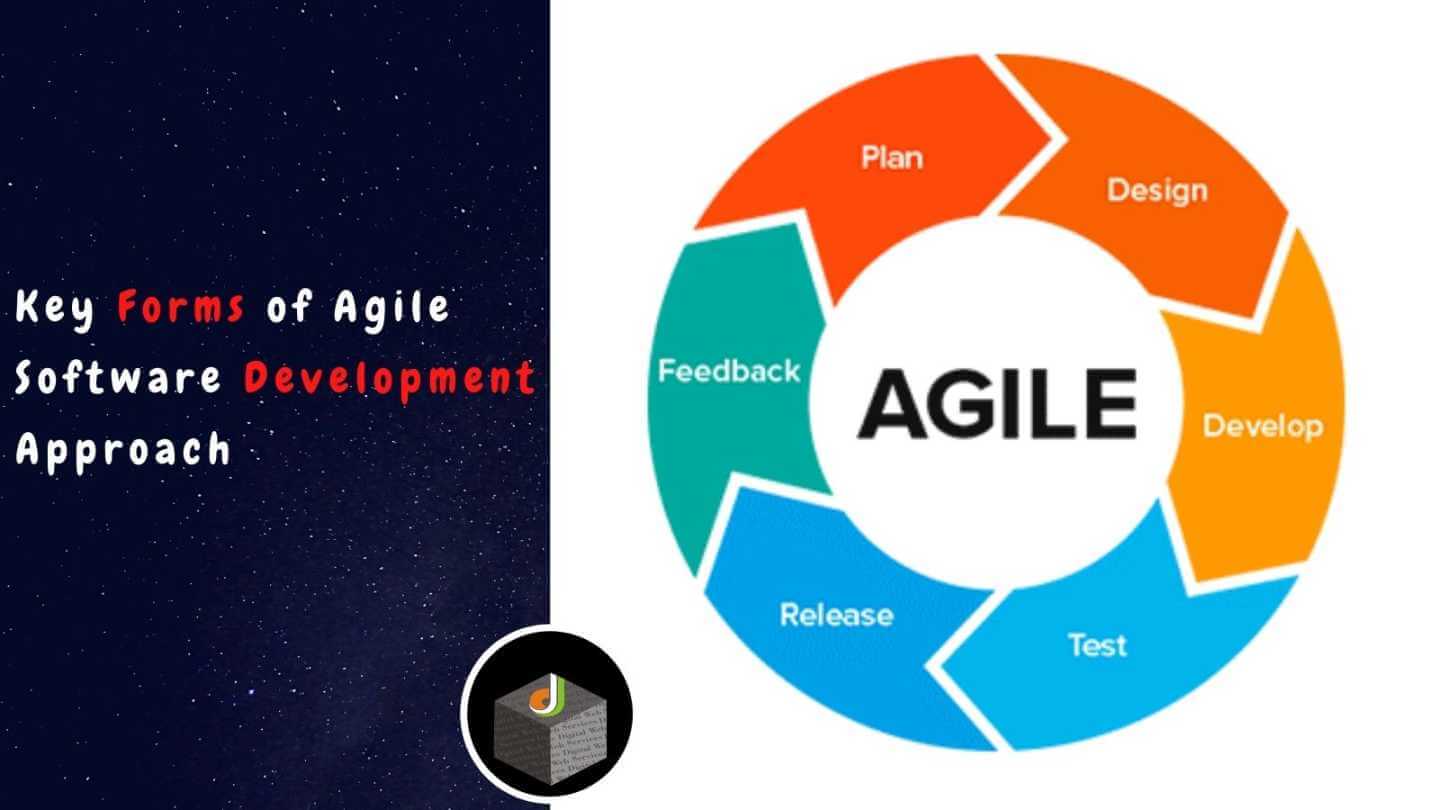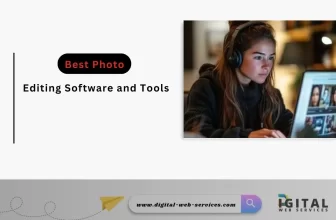
There are various approaches to software development with agile echoing the most across the globe today. Two decades ago, no one would have wanted agile as businesses focused on a robust and straightforward approach that was independent of too much back and forth. Then the demand for flexibility came and technology-based businesses felt the need of something more agile, which could help them stay up to date with the latest trends all the time.
This led to the rise of agile software development approach, which focused on iterative development or sprints instead of one-time requirement gathering and project completion. In this blog, we are going to discuss agile development in some details so that it can help you understand the development process and its key forms.
What is Agile Development?
Agile development is a methodology that starts the software development process with minimum information in hand. After the completion, it repeats the cycle and adds incremental progress. This way, even the entrepreneurs not sure about the features they want in their software can begin with the development. Other advantages of using agile methodology include flexibility to add or remove features without going back to square one and ensurity to latest market trends.
Principles of Agile Development
Agile software development manifesto, originally released in 2001 included 12 main principles:
- Early and Continuous Delivery of Valuable Software: Agile development starts with the development of a minimum viable product (MVP) and keeps on adding incremental improvements to ensure the continuous delivery of a valuable product.
- Embrace Change: Agile development is open to any changes in the software requirements. These changes are well documented and the only constant.
- Frequent Delivery: The entire development process includes frequent deliveries within short time spans ranging from a couple of weeks to months. These happen in the form of ‘sprints’ or ‘iterations’.
- Business and Developers Together: In an agile development approach, the business owner is an active participant of the development process whose inputs are required before the start of every sprint or iteration.
- Build around Motivated People: Agile development requires the development task to be distributed amongst a dedicated team of skilled developers.
- Face-to-Face Conversation: The sixth principle of agile development is face-to-face interaction via in-person meetings or video calls.
- Working Software: A functional software is the measure of progress in agile development.
- Sustainable Development: Agile development must include a stress-free and sustainable environment. For this, the business owner should set a flexible budget, deadlines and realistic expectations.
- Technical Excellence: Technical excellence is achieved in agile through meticulous attention to the project.
- Simplicity: Agile development is not about maximizing the workload but keeping it simple and achievable via sprints.
- Self-Organizing Teams: Agile development teams should act responsibly over their tasks and projects.
- Regular Reflection and Adjustment: During the sprints and iteration, the agile team should reflect back on its work and make adjustments to be more effective.
Forms of Agile Development Approach
Agile software development can be divided into three different methodologies which are:
1. Scrum
Scrum development involves various development sprints. Each sprint is a process of information gathering, development and testing. A project can have several sprints, with each sprint having a backlog or set of features to be integrated. In this manner, Scrum development completes the software development in various batches. Each developer is assigned a role or duty and any changes are implemented in the next sprint.
Benefits of Scrum Agile Development Methodology
- Faster delivery of software
- More transparency
- All changes are gathered first before integrating
2. Kanban
Kanban development includes a Kanban board where tasks are organized according to priority. There are no development sprints involved and changes can be implemented anytime depending on priority of tasks. In Kanban development, developers with bandwidth select the highest priority task from the board, which is known as pulling technique, and it is through this technique that incremental improvement is achieved.
Benefits of Kanban Development Agile Methodology
- Changes can be implemented any time
- Task allocation is done on the basis of priority
- Has a high-level of coordination amongst team members
3. Lean Development
Lean development is an agile development approach that aims at eliminating waste from the project and being most resourceful with minimum efforts. Lean development begins with the development of an MVP, which has the bare minimum set of features to validate the product in the market. Instead of the preference of the business owner, MVP’s performance and user feedback suggest the changes to be implemented in the software. Once those changes are implemented, the MVP is again released into the market for further review.
Benefits of Lean Development Agile Methodology
- The concept is based on maximum utilization of resources
- The development is driven by actual market dynamics
- Quality control is maintained at all times
Comparison of Scrum, Kanban and Lean
| Scrum | Kanban | Lean Development |
| Uses sprint cycles for software development | Uses Kanban board and pulling technique | Uses market feedback along with sprints |
| Roles are pre-assigned | Doesn’t require role assignment | Doesn’t require role assignment |
| Changes move on to next sprint | Changes are implemented based on priority | Changes are implemented based on the information gathered in user-feedback |
| Has fixed project timeline | Timeline evolves based on need | Timeline evolves based on need |
| Releases occur at fixed intervals | Releases are spontaneous | The first release is launched early, others are spontaneous |
When to Embrace Agile Methodology?
Agile methodology is sometimes the only reliable option for software development companies. It helps you develop a state of the art software with careful and precise development. Below are some situations where you would want to opt for agile development:
1. When the Software Idea is Innovative
Innovative software isn’t necessarily difficult to develop. However, as something like that has never been done before, the entire development process can get complex. Feature selection can get difficult and time consuming. Thus, via any other development approach, the entire project can stand still. With agile development, you can not only start the project development but also validate the software to assure a quality end-product.
2. When you Want to Be an Active Part of the Process
By being an active part of the development, clients can be ensured quality and value for every penny they spend. With agile development, not only they can play an important role in the development but be the key figure in controlling the direction of the project. They can monitor performance more closely and maintain transparency throughout the process.
3. When the Market Preferences are Dynamic
If the market preferences, such as consumer behavior and trends are dynamic and change frequently, then you are also required to keep up with those dynamic trends. Traditional development methods don’t allow flexibility to change to add or remove features at a later stage thus with them you can fail to meet the market norms. Agile development on the other hand brings conformity to market trends.
4 When the Project is Experimental
Experimental projects estimate scope for development mistakes, which can cost a business owner a lot when developing through traditional methodologies. In agile development, changes can be done anytime so they aren’t that expensive. It is easy to correct mistakes or experiment with features. You can even test the product in the market before completion and this makes agile the most suitable approach to develop experimental projects.
5. When you Have a very Limited Budget or Require Funding
With agile development, businesses with limited budget don’t need to compromise on important features. As the entire software is developed in parts, it gives the business owners more flexibility in feature selection. Moreover, enthusiasts with restricted funding can also prepare a Proof of Concept (PoC) with agile development and find investors to fund their business.
Achieve Superior Results with Agile Methodology
Agile methodology brings fruitful results for clients:
Higher ROI: As the development is completed in cycles and features are selected meticulously, businesses only end up paying for the most necessary features.
Higher Productivity: Agile development requires team efforts along with a high level of individual performance. This ensures better productivity.
Higher Satisfaction: The several rounds of testing and quality assurance at various stages of the agile development process provide higher satisfaction to clients.
Better Schedule: Agile development follows a strict schedule for everything, such as communication and the execution of its various sprints.
Higher Quality: When compared to traditional development methods, agile methodology focuses on innovative flexibility to make the end-product market ready and highly competitive.
Lower Cost: Business owners can adjust the features as per their budget and end the development process anytime at their discretion. Moreover, agile methodology only requires the minimum investment to begin with, which also ensures lower costs.
Boost Your Agile Transformation with Best Agile Software Development Team
FATbit Technologies is an agile development company that assists entrepreneurs in launching various types of innovative businesses. The majority of FATbit’s contributions are made in the eCommerce industry where it has helped several entrepreneurs launch potential new businesses like online marketplaces, furniture rental marketplaces, heavy equipment rental marketplaces, eLearning platforms, cab booking platforms food delivery platforms, etc. To support eCommerce operations, FATbit has also launched a wide range of readymade business solutions that have been featured in the Entrepreneur, Inc. and Business Insider. All these solutions are fully customizable and come with one-year of free technical support. You can contact FATbit’s sales team to know which solution best fits your business.
Digital Web Services (DWS) is a leading IT company specializing in Software Development, Web Application Development, Website Designing, and Digital Marketing. Here are providing all kinds of services and solutions for the digital transformation of any business and website.










